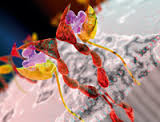Analysts estimate that China will overtake France and Germany as the world’s third-largest prescription medicines market in 2012, trailing only the US and Japan.
China to power global generics development
Home/Pharma News
|
Posted 15/04/2011
 0
Post your comment
0
Post your comment

Part of that stems from China’s sheer size and its rapid economic growth. A rising middle class and an aging population have ready money with which to look after themselves. China recognises that Western medicines enjoy a higher reputation for quality and has authorised ‘western prices’ for innovative drugs, making it easier for outside companies to get in. Big Pharma is scrambling to take advantage of the market.
Other reasons include China’s new healthcare reform. Matching increasing revenue with increasing healthcare demands from the people, it is expanding its state healthcare insurance plan, so both urban and rural regions should be able to afford more prescriptions.
The reform includes restricting hospitals from marking up drugs too high. In the past, shady practices created more incentive to over-prescribe western medicines. Whilst expensive medicines are being discouraged, traditional Chinese substitutes are becoming more popular. Often much cheaper than western drugs, traditional medicines comprise one-third of the government’s essential drugs list. Patients who purchase listed drugs get significantly reimbursed.
This win-win situation is leading to a huge increase in demand for medicines, so all types of pharma firms are being strongly encouraged in China.
Today within China, tomorrow the world
In recent years both India and China have become major suppliers of low-cost drugs and drug ingredients to global markets, with products gaining a solid presence in the generic and over-the-counter sectors. In a recent visit designed to strengthen ties, China’s Prime Minister Mr Wen Jiabao told business leaders at the India-China Business Cooperation Summit in New Delhi the countries are ‘partners for cooperation, not rivals in competition’ adding ‘there is enough space in the world for the development of both China and India’.
Particular emphasis was placed on partnerships for generic drug manufacturing. Mr Daara Patel, Secretary General of the Indian Drug Manufacturers’ Association, said a ‘Chindia’ affiliation would ensure that ‘together we could meet almost all global generic requirements’.
To sow the seeds of trust, Mr Wen Jiabao announced that China will invest more in India. This is intended to allay the worries of Indian politicians who want India to benefit more from the relationship.
With China predicted to take second place in the world’s drug market by 2015, it is only a matter of time until Chinese firms acquire the maturity and confidence to take on the world.
Related articles
China’s healthcare reform in 2010
China’s booming pharmaceutical market attracts R & D
Source: In-pharmatechnologist
Guidelines
New guidance for biologicals in Pakistan and Hong Kong’s independent drug regulatory authority
Canada poised to remove requirement for Phase III trials for biosimilars
Policies & Legislation
Argentina streamlines drug approval process
ANVISA tackles 24-month backlog in biologicals post-registration petitions
Most viewed articles
The best selling biotechnology drugs of 2008: the next biosimilars targets
Global biosimilars guideline development – EGA’s perspective
Related content
Formycon signs new aflibercept biosimilar pacts and launches ranivisio in Europe
Bio-Thera and Stada expand biosimilars alliance to include tocilizumab
Global partnerships for biosimilar commercialization announced
New denosumab and ustekinumab biosimilar launches in US, Canada and Japan
Formycon signs new aflibercept biosimilar pacts and launches ranivisio in Europe

Home/Pharma News Posted 13/11/2025
Bio-Thera and Stada expand biosimilars alliance to include tocilizumab

Home/Pharma News Posted 20/10/2025
New denosumab and ustekinumab biosimilar launches in US, Canada and Japan

Home/Pharma News Posted 10/07/2025
The best selling biotechnology drugs of 2008: the next biosimilars targets







Post your comment